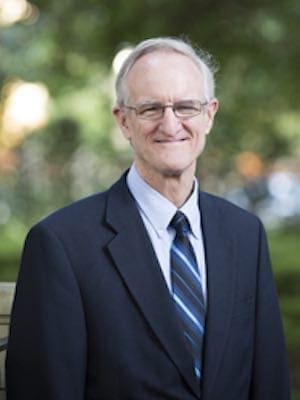Like other religious groups in antebellum America, Baptists split over the issue of slavery. Baptists in the South created a separate organization when the Triennial Convention, the national foreign missionary society, decided to exclude slaveholders as missionaries. Southern Baptists insisted that slavery was a civil issue.
While Baptists in the North preferred the society model (an organization with one primary activity), Southern Baptists organized on the convention model and created mission boards. This centralized method of doing missions was soon attacked by Landmarkism in the latter half of the 19th century.
Landmarkers, led by J. R. Graves, articulated an extreme doctrine of the local church that said only local churches, not mission boards, should do missions. The local Baptist church was the true New Testament church since only Baptists could trace a direct succession of churches back to Jesus and John the Baptist. Consequently, the ordinances, baptism and Lord’s Supper, administered by other denominations were rejected. Landmarkism was defeated, but a legacy of Baptist superiority and mistrust of other denominations resulted.
Initially, many Southern Baptists continued to use some Northern agencies like the American Baptist Publication Society. By the end of the 19th century, however, Southern Baptists afforded an exclusive loyalty to its maturing boards. A sense of denominational loyalty was forged around a common organizational structure (a Foreign Mission Board, a Home Mission Board, a Sunday School Board and a theological school—Southern Seminary).
The development of an organizational identity went hand-in-hand with a commitment to a cultural identity. To be Baptist was to be Southern. While Southern Baptists strongly promoted personal morality, they were “culturally captive” to a racial orthodoxy of white supremacy that prevailed in the segregated world of the Jim Crow South.
As a cultural force, the SBC became “the Catholic Church of the South.” Southern Baptists also found commonality in a focus upon individual religious experience—revivalistic conversion—and normally avoided social gospel concerns that characterized Baptists in the industrial North. Southern Baptists have always been evangelistic.
Organizational efficiency was a goal of most denominations in the first half of the 20th century. Southern Baptists have been dubbed “Business Baptists” for their adoption of the corporation model during this era of significant growth and increasingly complex organization.
An Executive Committee was established (1917). The $75 Million Campaign, a convention-wide fund raising effort, raised $58 million (1919-1924). And the Cooperative Program, a unified budget that supported all of the convention’s agencies, was implemented (1925). Most Southern Baptists consider the Cooperative Program the most effective stewardship method in Christian history.
Despite a common denominational and cultural identity, the SBC has often been shaped by conflict. In addition to the 19th-century conflicts over slavery and Landmarkism, the 20th century has been marked by dissension.
In the 1920s, Southern Baptists experienced a “lighter” version of the Fundamentalist-Modernist conflict in the North. Evolution was criticized but a creed was avoided. Denominational loyalists, led by E. Y. Mullins, adopted the 1925 Baptist Faith and Message, a voluntary confession of faith that affirmed the authority of the Bible for “all religious opinions.”
In recent years, the synthesis of denominational loyalty and Southern identity has collapsed. “Unity (for evangelism and missions) amidst diversity” gave way to doctrinal conformity. In 1979 the “Fundamentalist-Moderate Controversy” erupted.
Fundamentalists, led by Paul Pressler and Paige Patterson, engineered a “conservative resurgence” to “rescue” the SBC from alleged liberalism. They demanded adherence to biblical inerrancy. Moderate Baptists unsuccessfully warned that the issue was “control versus freedom” and adherence to the agenda of the religious right.
A revised Baptist Faith and Message (1963 and then 2000) now functions as a creed for Southern Baptists and the conflict rages at the state convention level. In 1991 some moderates created the Cooperative Baptist Fellowship, which focuses on traditional Baptist principles, like local church autonomy and the priesthood of believers.
The SBC is the largest Protestant denomination in America, publicizing a membership of 15.8 million persons, 40,000+ churches, 4,750 foreign missionaries and 4,815 home missionaries.
Doug Weaver is professor of Christianity and chair of the religion and philosophy division at Brewton-Parker College in Mt. Vernon, Ga. He is editor of The Whitsitt Journal and a Yankees fan. He and his wife Pat have two children, Aaron and Andrea.
Order Weaver’s books from Amazon!
The Healer-Prophet, William Marrion Branham
From Our Christian Heritage

